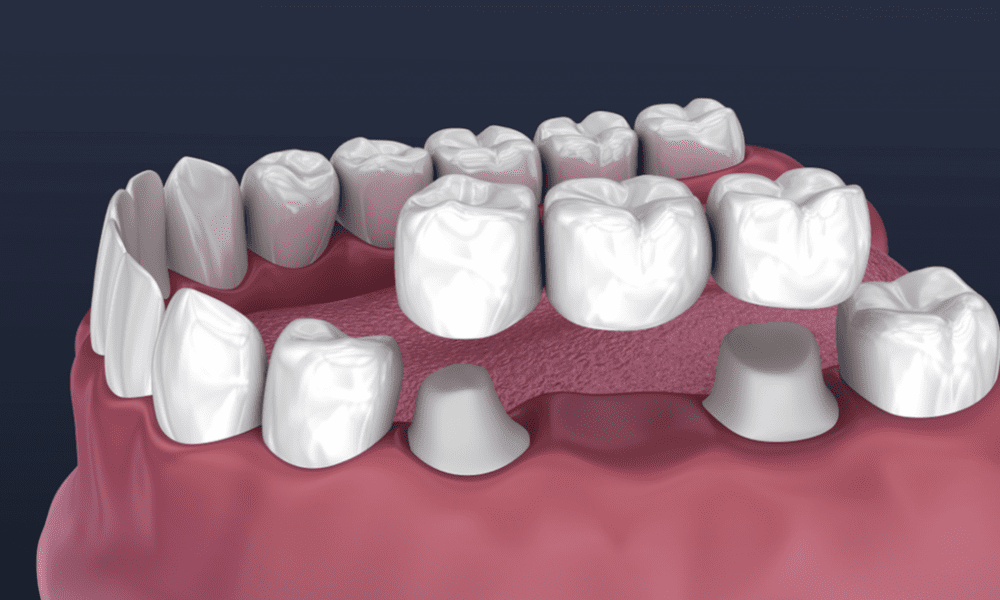Dental Cap vs Crown: What’s the Difference?

It’s possible that, when you were searching for information on dental crowns, you might have come across the phrase “dental caps.” These expressions are sometimes used for the same purpose. Therefore, we can raise the question if there is a difference between those words. In this comprehensive article, we’ll examine dental caps vs crown with the hope of giving you an intimate knowledge of these dental restorations.
Dental Cap vs Crown: Is There A Distinction?
Interestingly, despite the popular conception that a cap is different to a dental crown, the term “cap” is essentially a layman’s term for a dental crown. Indeed they respectively connote the same thing. It also may be used in a context similar to the one with the term “veneers cap,” because it explains that this restoration “caps” a tooth. A dental crown (featured image) or cap is a dental restoration that is placed over the remaining part of a tooth to return its aesthetics and to keep the damage from getting worse.
As a standard restoration practice, the crowns are placed to reinforce the tooth if it is highly damaged or the place of restoration achieved through a filling is insufficient. It is produced as far as porcelain and metal (up to gold) are involved. Either of which can be used individually or in combination. As well as the oral functions of the crowns, being able to strengthen the tooth and give back a natural-looking smile, crowns can offer certain cosmetic gains.
Uses of Dental Crowns (or Caps)
More advantages come along with using dental crowns, as well as, a variety of dental treatments that use them. Some common uses of dental crowns include:
- Improving the appearance of a tooth
- Protecting the remains of a broken tooth from further damage
- Supporting a denture or bridge within the mouth
- Strengthening and repairing damaged teeth
- Covering a dental implant
- Concealing a discolored or misshapen tooth
- Protecting a weak tooth
Different Materials for Dental Crowns
There are different materials available for Dental crowns, all carrying their own set of advantages and disadvantages. The type of material is the question that one has to answer after considering things like the beauty, the tooth-taking treatment and the durability.
Here are some common materials used for dental crowns:
- Ceramic Crowns
The process of production of several types of crowns in a laboratory is complete and the surface is built layer upon layer which is translucent. This appearance resembles that of natural teeth. They are very much in demand, the reason being they are often used at the front teeth and this gives them an ideal position. While ceramic is less susceptible to chipping or cracking as metal crowns, as metal crowns are very strong, they are more prone to damage.
- Gold Crowns
Gold crowns and such crowns made from alloys can be very tight so that they stand the test time. The general feature of these materials is their tolerance of teeth, meaning they don’t wear out when you bite. Furthermore, we should remember that such crowns could be made of gold or silver which is not very pleasurable to the eyes of some people if for example, they see the crown.
- Porcelain-Fused-to-Metal (PFM) Crowns
PFM crowns are a composite of metal and porcelain. They carry the strength and beauty. On the bright side, they can look as natural as all-porcelain crowns because of the layered construction, but the ‘opposite’ could ‘happen’ in some cases. The possibility of ceramic layer chipping and cracking is not eliminated but there will always be a metal shield underneath.
As you can see, the selection of material for crown dental work will depend on individual cases and preferences.
The Dental Crown Placement Process
The process of getting a dental crown typically involves two visits to the dentist:
- First Visit: The first phase of dental crown installation is done by the dentist. He will carefully examine the tooth under a material known as dental casting, and then subsequently prepare the tooth for the crown. Radiographic images may be obtained to scrutinize the roots of the tooth and bone surrounding it vis-à-vis the presence of any infection or decay. A space is to be created for the crown, the tooth will be reshaped, and the impression will be collected via putty or paste. A requisite temporary crown is going to be installed to shield your tooth during the process of fabrication of the permanent crown.
- Second Visit: On the second visit, the temporary crown alongside of the permanent one will be removed. Then, this getting done with the permanent crown will be cemented onto the prepared tooth. The dentist will establish that you are both satisfied with the colour and fit of the crown.
Dental Cap vs Crown: The Final Say
Lastly, dental caps and dental crowns are of the same category of dental treatment. The two words are used as synonyms and therefore often form a homogeneous sequence. Choosing the right material for you is an important factor in the case of the dental crown. This factor depends on how the flooring you want the given tooth to look like, the tooth being treated and the durability you are after.
Repeatable oral hygiene activities, including brushing your teeth twice a day with fluoride toothpaste and flossing using an interdental brush, are the two strongest integrated tools to have your crown stay in good condition. Recall that although dental crowns are durable, the edges may still decay if not properly cared for and maintained.
If you are a patient who would like to seek dental crown treatment, Dentaky has to be the number one choice for high-quality dental crowns in Turkey. Our experienced team of professionals will take care of you and your specific requirements to make sure your crown goes completely unnoticed and will make your smile better. Contact Dentaky to schedule the consultation.





